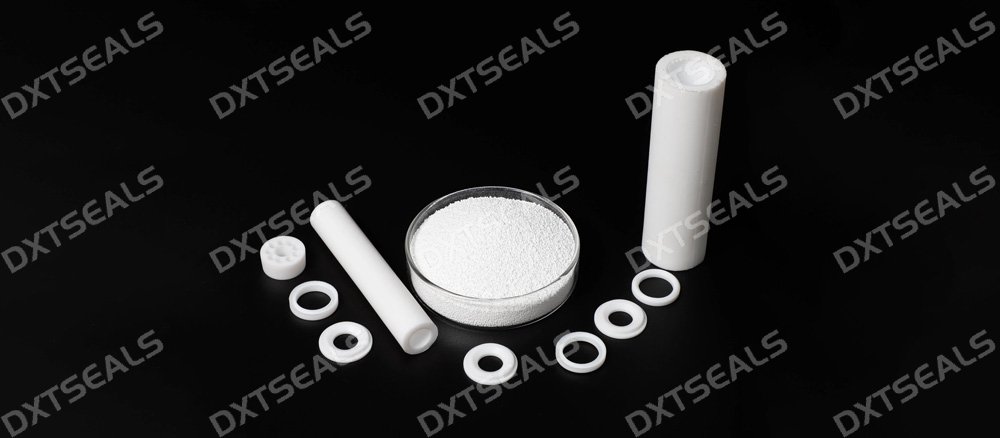
Plastic seals have become indispensable components in many industrial and commercial applications due to their adaptability, cost-effectiveness, and versatility. With rapid advancements in material science, the future of plastic seals looks promising, featuring enhanced performance, durability, and sustainability. In this article, we explore the most exciting innovations and trends in plastic seals that are poised to revolutionize the sealing industry.
1. The Evolution of Plastic Seals: A Brief Overview
Over the past few decades, plastic seals have evolved significantly, with materials like PTFE, PEEK, and polyurethane replacing traditional rubber and metal seals in many industries. These modern plastic materials offer excellent chemical resistance, thermal stability, and mechanical strength, making them ideal for demanding environments. The next wave of innovations is set to push these materials even further, offering new opportunities for customization and performance optimization.
2. Innovative Materials in Plastic Seals
One of the key drivers behind the future of plastic seals is the development of new materials with enhanced properties. Material science research is focused on creating plastics that can withstand more extreme conditions while providing longer-lasting performance. Some of the latest innovations include:
- High-Performance Thermoplastics: Materials like PEEK (Polyether Ether Ketone) and PEI (Polyetherimide) are being enhanced to provide even greater resistance to high temperatures and chemicals. These materials are ideal for applications in aerospace, oil and gas, and chemical processing.
- Bio-Based Plastics: Sustainability is becoming a priority across industries, and the development of bio-based plastics is gaining momentum. These environmentally friendly materials are created from renewable resources and offer comparable performance to traditional plastics, making them a sustainable choice for future seal designs.
- Self-Healing Plastics: One of the most groundbreaking innovations in plastic seal technology is the concept of self-healing materials. These plastics can repair micro-damages over time, increasing the lifespan of seals in harsh environments without the need for frequent replacement.
3. Sustainability Trends in Plastic Seals
As the world becomes more environmentally conscious, industries are looking for ways to reduce their carbon footprint. This has led to the development of sustainable plastic seals that are both durable and eco-friendly. Some notable trends include:
- Recycled Plastics: Many manufacturers are now incorporating recycled materials into their seals, reducing waste and promoting a circular economy. These recycled plastics are processed and refined to meet the high-performance demands of industrial sealing applications.
- Biodegradable Seals: Biodegradable plastic seals are designed to break down naturally in the environment, reducing the impact of waste. These seals are particularly useful in single-use or temporary sealing applications where sustainability is a top concern.
4. Advanced Manufacturing Techniques
The future of plastic seals is not only about new materials but also about how these materials are processed and manufactured. Advances in manufacturing techniques are allowing for more precise, efficient, and cost-effective production of plastic seals. Key trends include:
- 3D Printing (Additive Manufacturing): 3D printing is revolutionizing the production of plastic seals by enabling rapid prototyping and customization. This technology allows for complex seal designs to be produced quickly and affordably, reducing lead times and enabling greater flexibility in seal design.
- Injection Molding Innovations: Traditional methods like injection molding are also seeing advancements. Enhanced tooling, faster cycle times, and greater material flexibility are making it possible to produce high-performance seals at lower costs.
- Nanotechnology: The use of nanotechnology in seal manufacturing is another emerging trend. By manipulating materials at the nanoscale, manufacturers can create seals with enhanced properties, such as improved wear resistance, thermal stability, and chemical resistance.
5. Customization and Specialization
As industries demand more specific performance characteristics from their seals, customization is becoming increasingly important. The ability to tailor seals to specific applications is a significant trend that will continue to grow in the future.
- Application-Specific Seals: The development of seals designed for specific applications is on the rise. For example, seals used in extreme environments, such as oil drilling or space exploration, require specialized materials that can handle the unique challenges of these conditions.
- Custom Design Solutions: Manufacturers are working closely with clients to design seals that meet precise performance requirements. This trend is driven by advancements in material science and manufacturing, allowing for more bespoke sealing solutions.
6. Digitalization and Smart Sealing Solutions
The digital revolution is making its way into the world of seals as well. Smart sealing solutions are emerging as a trend, where seals are equipped with sensors to monitor their condition in real-time.
- Smart Seals: These innovative seals can detect changes in pressure, temperature, or chemical exposure, and send alerts when maintenance is required. This predictive maintenance technology can help prevent costly equipment failures and extend the life of seals.
- Data-Driven Performance: The data collected from smart seals can be analyzed to optimize performance, improve material selection, and anticipate future seal needs, leading to more efficient and reliable systems.
7. Challenges and Considerations for the Future
While the future of plastic seals is full of exciting possibilities, there are still challenges to overcome. The increasing demand for high-performance materials and the need for sustainability must be balanced with cost considerations. Additionally, as new materials and manufacturing processes are introduced, there is a need for thorough testing and validation to ensure that these innovations meet the stringent requirements of various industries.
8. Conclusion: A Bright Future for Plastic Seals
The future of plastic seals is shaped by ongoing innovations in material science, manufacturing techniques, and sustainability efforts. As industries continue to demand more from their sealing solutions, the next generation of plastic seals will offer enhanced performance, greater durability, and a reduced environmental impact. With advancements like self-healing plastics, smart seals, and bio-based materials, plastic seals are poised to play a critical role in the future of industrial applications.
